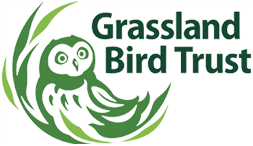Snowy owls and Short-eared owls journey south from breeding grounds in the Arctic every year to spend the winter in the Washington County Grasslands Important Bird Area (IBA). They come seeking abundant populations of the mice, voles and other small prey they depend on for survival.
Thousands of bird watchers and photographers flock to the area soon after. Most of the owls’ fans understand the need to keep a respectful distance, but there are always some who try to get too close.
Recent incidents involving photographers chasing Snowy owls to get close-up photos – and trespassing on private property to do it – have enraged both landowners and owl lovers alike. The NYS Dept. of Environmental Conservation (DEC) issued a statement warning that laws protecting the birds will be enforced and patrols of the area have been increased.
Flushing owls from their roosts causes the birds to waste energy they need for hunting and staying warm. This can cause or contribute to the bird’s injury or death.
“We have a Snowy owl that was hit by a bus when it flew into the road to avoid photographers,” reports Wendy Hall, co-director of the Adirondack Wildlife Refuge & Rehab Center. “We get birds every year that are starving to death because they don’t have energy left to hunt,” she added.
One of the Snowy owls wintering in the IBA was found dead Wednesday January 24th, possibly hit by a car.
Vermont Institute of Natural Sciences, or VINS, reports two Snowy owl deaths so far this winter. “They were so severely emaciated they died within hours,” says wildlife keeper Grae O’Toole. “Their organs were already shutting down – there wasn’t much we could do.”
O’Toole said VINS usually receives a fair number of starving Barred owls every winter. “Not this year,” she said. “We think the severe cold killed any birds that were struggling before the freeze.”
New Hampshire Audubon developed the following guidelines to observe owls without disturbing them:
- Watch from your car if possible – an automobile makes an excellent blind
- When the bird starts staring at you, you’re too close – it’s time to back up
- Always respect private property and area-closed signs
“While a single incident may not be life threatening, the cumulative effect of repeated disturbances, which are likely to occur when an owl perches in highly visible, public locations, reduce the likelihood that they will survive to return north to breed.” NH Audubon
The Post Star: Officials deal with owl harassment in birdlands again
Albany Times Union: Some owl fans in Washington County need to step back
Albany Times Union: Visiting Arctic owl found dead in Washington County
